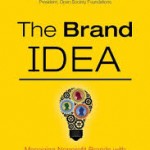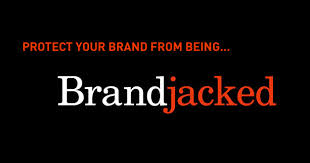Six ways to package your story so it qualifies as news
 If you don’t have anything to hide, why should you worry about media relations? I get asked this question on at least a weekly basis. People figure that if they’re not breaking the law or having a sordid affair with a married politician, they really shouldn’t have to spend time thinking about dealing with the media. They also think that because they know all about how wonderful their organization is, everyone does too.
If you don’t have anything to hide, why should you worry about media relations? I get asked this question on at least a weekly basis. People figure that if they’re not breaking the law or having a sordid affair with a married politician, they really shouldn’t have to spend time thinking about dealing with the media. They also think that because they know all about how wonderful their organization is, everyone does too.
And they’re wrong on both counts filme aus youtubeen mac.
All of my clients are hardworking, publicly-minded people who work in progressive nonprofits. That’s the only kind of client my firm takes. So when I suggest to them that it is important to learn about what makes the media tick and how to use that knowledge to their advantage, people always look at me like I wandered into the wrong meeting. They are laboring under the belief that because they are the good guys, they will look like the good guys if the media ever comes to call.
Big mistake minecraft version 1.12 herunterladen. For several reasons.
Misconceptions about media and coverage
First, they have a misconception of what the term “media relations” or “public relations” means. To many people, these terms conjure up visions of slick, chain-smoking corporate types lying through their teeth. In reality, the number one rule of media relations is never, ever, lie. Not even about the tiniest thing.
Second, most people who are dedicating their lives to improving their communities tend to be under the impression that most reasonable people can see what they see–the poor need food, kids need education and families need access to health care word office kostenlos downloaden 2010. What they forget is that they are standing on the front lines – and there are way too many people out there who travel from their gated communities to their high rise offices and don’t see any of that. Those are people who could potentially become donors, volunteers, and voters in support of their cause – if they only could be reached.
Third, because my clients do their jobs very carefully, knowing that lives and livelihoods are at stake, they often believe that everyone in the media is as careful as they are. And that just isn’t the case. You can blame it on impossible deadlines, corporate profit motive, sloppy reporting or just bad editing, but the fact of the matter is, a news-story is generally written at breakneck speed by an overworked reporter who has little or no background on the issue filme fürs handy kostenlos downloaden. It is edited at an even faster pace by an even more overworked editor who has even less knowledge.
How to qualify as news
So, no matter who you are, if you have a desire to inform the public, increase your donor base, change laws or regulations, or just get some well-deserved kudos, it is in your best interest to become savvy in media relations. It is never about lying or twisting facts. It is about is packaging information so that it could qualify as “news,” and then making sure that everything needed for the story is lined up in a way to make it easy, fast and accurate for the reporter.
To know how to “package” your information, you have to know what makes a story “news” hörbücher download kostenlos ohne anmeldung. When I taught journalism to college students, every basic journalism textbook laid it out the same way. So I teach my clients exactly what every journalist is taught in their first reporting course. A news story must contain at least one (and hopefully more than one) of the following six elements: conflict, impact, novelty prominence, proximity or timeliness.
Conflict is the strongest basic news element there is lernwerkstatt 8 kostenlos downloaden deutsch. The fact that everything is hunky dory just isn’t news. When something goes wrong, then it becomes interesting. It’s just human nature. Think about the last time you called a friend with some really good gossip. Was it good news? Probably not. Conflict is what makes story-telling go round. And news is story telling. If there’s not conflict in your story, you’re going to have a hard time selling it to the press.
Impact is another strong basic news element visio 2016 standard herunterladen. If something happens that’s going to have an impact on the reader, they’ll likely want to know about it. Unfortunately, we’re a country of self-centered people. If it affects them personally, Americans care. If it doesn’t, generally they don’t. We can discuss the morality of this at another time (and believe me, I do) but the fact remains. A majority of readers probably aren’t that interested in a civil war in a far off country. But they DO care if that war is going to affect their coffee prices amazon prime video download and burn.
Novelty is easy: If something happens all the time, it’s generally not news. If it is very unusual, then it is. The standard J-school example is this: if dog bites man, that’s not news. If man bites dog, that’s news.
Prominence is the culprit behind all those Brittney Spears stories. We are a celebrity culture, and once someone has made it into the limelight, any tiny tidbit about them is news. But remember, prominence means prominence herunterladen. Your Executive Director might be a star around the office, but in terms of media, unless they also double as a movie star or a billionaire, they probably don’t count as “prominent.”
Now for the last two: Proximity and Timeliness. Proximity deals with distance. If you’re pitching a story to the local paper, it better be a story that takes place right in town. Statewide papers do carry some national news, but for the most part, they write stories about what happens in the state. Timeliness means something just happened – a court case decided a month ago is not news, one decided today is. Timeliness is the reason reporters and editors work fast and furious herunterladen. Because to delay means to lose the story.
Those are the six elements of a news story. If you want a media outlet to pick up on your story, it has to have one (or more) of those elements. That means you should package your story to play up one or more elements. Usually the two that work best are conflict and impact. If you can show how what your organization does helps ordinary people who don’t even know you exist – you’ve got a story. If you can show how some issue in your community is causing a clear definable conflict, you’ve got a story. There are all kinds of ways you can work this, but these are the foundational building blocks to pitching the media.
You can also use these elements stop a story from becoming news. If a journalist calls you and wants to talk about an issue you’d rather not be in the paper, then the strategy is to TRUTHFULLY play down the elements in the story. If you can convince a journalist that the story is old (not timely), or that your certainly not concerned about it (no conflict) or that it doesn’t really affect anyone (no impact), you’ve successfully killed a story. That comes in handy too.
At this point, I always have to stop and tell my clients that they shouldn’t despair. Despite how it looks, the human race is not beyond redemption. But talk of “reforming the media” isn’t going to do much good in the short run. If you work at a nonprofit that needs to get its message out there, you’d be better served by working within the parameters then fighting them. Just remember the elements of a news story:
Conflict
Impact
Novelty
Prominence
Proximity
Timeliness
See also:
The Networked Nonprofit: Connecting with Social Media to Drive Change
This was Part I: The 6 elements of a news story
Image credits: fawstin.blogspot.com, quantummarketers.com, gladiatorguards.com, torreyshannon.com





![BookCover[1]](http://www.causeplanet.org/blog/wp-content/uploads/2014/09/BookCover1-232x300.jpg)

































